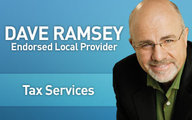As parents, we encourage our children to work so they can learn important values about work and independence. At what point, if at all, do children need to file an income tax return for the money they earn?
The IRS does not exempt anyone from the requirement to file a tax return based on age, even if your child is declared as a dependent on your tax return.¹
Your dependent children must file a tax return when they earn above a certain amount of income.
Dependent children with earned income in excess of $6,300 must file an income tax return.² This threshold may change in 2017 and years after, so please consult a professional with tax expertise regarding your individual situation.
Even if your child earns less than the threshold amount, filing a tax return may be worthwhile if your child is eligible for a tax refund. The standard deduction for a child is different from that of an adult: It is the greater of $1,050 or earned income plus $350, with the maximum equal to the regular standard deduction.³
The rules change for unearned income, such as interest and dividend payments. When the annual total of unearned income exceeds $1,050, then a return must be filed for your child. If your child’s unearned income only consists of interest and dividends, then you can elect to include it on your own return and combine it with your income, though it may result in higher income tax to you.
If you decide to prepare a separate return for your child, the same reduced standard deduction rules detailed above will apply.
Contact Alliance Financial & Income Tax if you have questions or need assistance.














